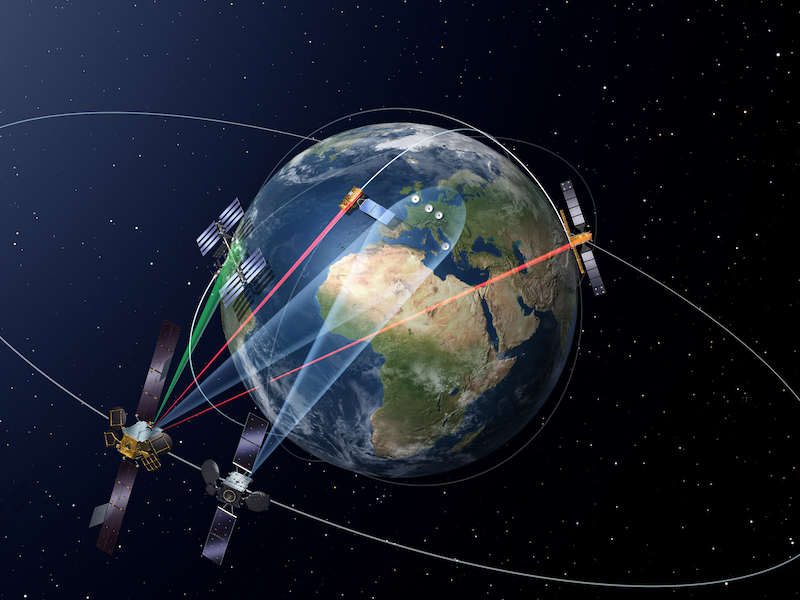Europe launches space laser data satellite
Loading...
The European Space Agency Saturday launched a telecommunications satellite into space from Baikonur, Kazakhstan, that will use lasers to gather information from Earth observation satellites and quickly send it to sensors on Earth.
The launch was part of a project known as European Data Relay System, or EDRS, and is the first of several of these data-transfer satellites that will be launched into space in the next several years.
The ESA says that its new laser communications network will create what it calls a “SpaceDataHighway,” able to transfer information such as photos and videos from Earth observation satellites, drones, and even from the International Space Station down to Earth at a near real-time speed of 1.8 Gigabits per second. This is 90 to 100 times faster than the speed of a home Internet connection, says the ESA.
“EDRS is one of a kind and ESA’s most ambitious telecom programme to date, creating the means for an entirely new market in commercial satellite communications,” the agency said in an announcement.
The faster transmission speed will be a boost to responders to disasters, pollution incidents, or illegal fishing or ocean piracy, for example, who could make better decisions with more immediate access to satellite data.
"Some important shipping routes go through the North Pole region, where thick-ice [floes] can cause damage to vessels and even threaten human life," Magali Vaissiere, ESA's director of telecommunications told the BBC.
"It's also an environment in constant motion which means that data that is two days old is not only unhelpful – it could even be unsafe,” she said, referring to the limitations of traditional radio satellites.
Current satellites in low Earth orbit are able only to send back the data they collect during their 100-minute orbit time around Earth during a 10-minute window when they have line-of-sight with sensors on Earth.
ESA’s first optical satellite will remain in a stationary position higher in space (same as television satellites) than other satellites, about 36,000 kilometers (nearly 23,000 miles) from the Earth's equator and above Europe. It will collect data from this location and relay it down to European ground stations, avoiding the time delay when other Earth observation satellites have to wait for “line of sight” with ground stations, says the ESA.
EDRS laser technology was developed by German satellite builder Tesat, a subsidiary of French aerospace company Airbus at a cost of 500 million euros.
The laser terminal will be tested over the coming weeks and months with ground stations in Germany, Belgium, and the United Kingdom, and is expected to be fully operational this summer, when it should start serving its first customer, the European Commission.
Over the next several years, ESA plans to discharge two more laser-equipped satellites into space, one over Europe and the other over the Asia-Pacific region.
Their biggest challenge, said ESA project manager Michael Witting, will be to get these laser terminals to talk to each other.
"It's a laser beam; you have to point it accurately. It's the same as taking a torch in Europe and pointing at a two-euro coin in New York,” Mr. Witting told ArsTechnica.
“That's one of the main challenges for developing the laser communication terminal, but also developing the satellite – it has to be stable enough to allow that kind of accuracy," he said.






